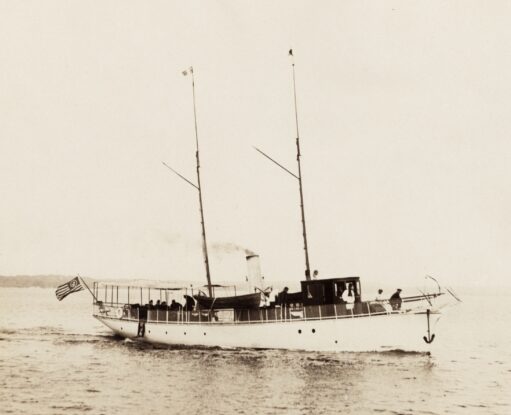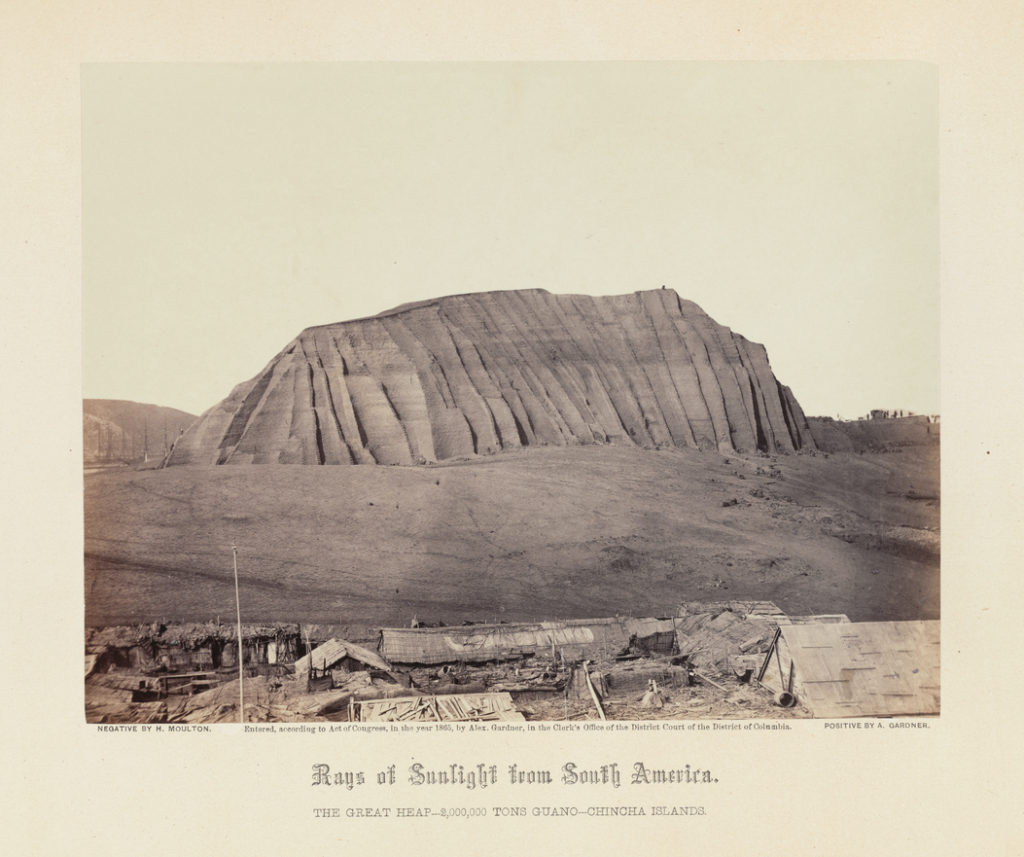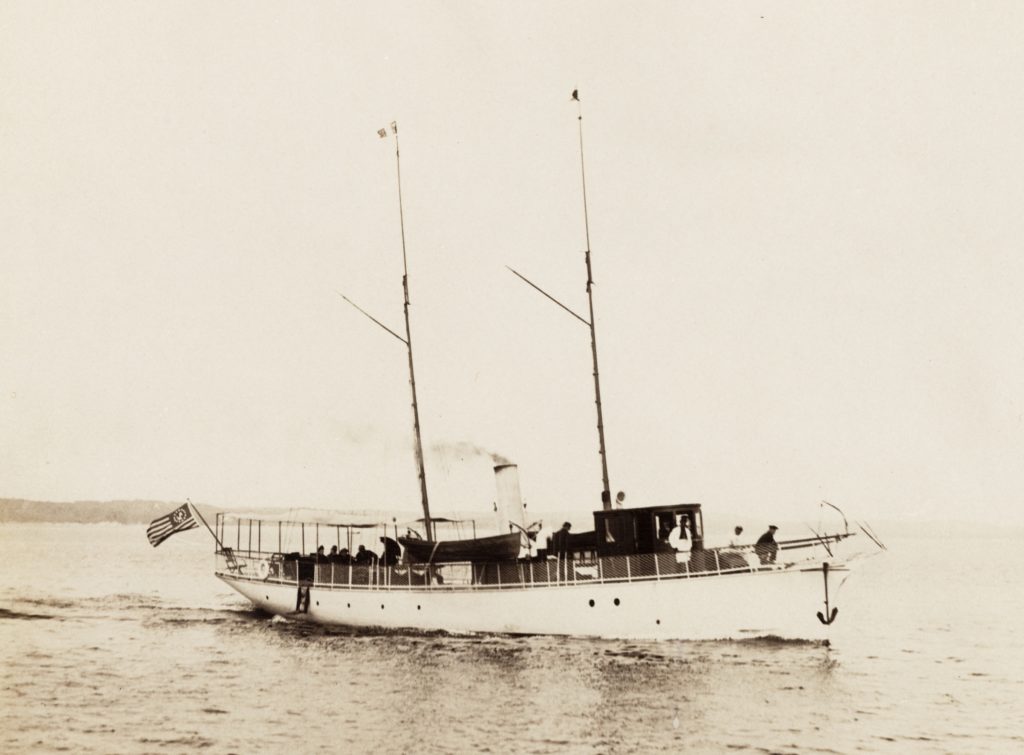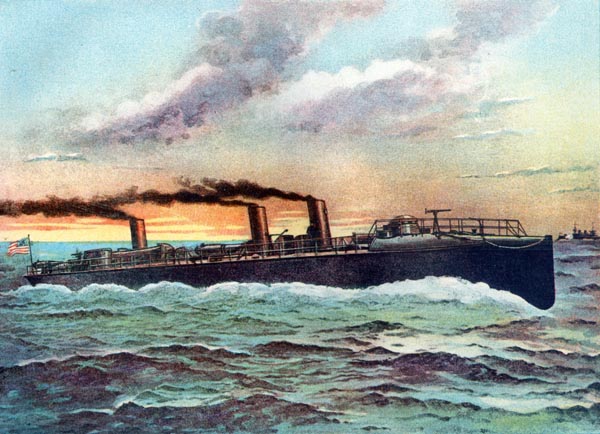May 28, 2020
This Week in Herreshoff History: May 28
News this week from 1873 to 1920! Guano speculation and more hot topics in fertilizer news, a prescient note about HMCo. steam power, torpedo boats, a dismasting and two steel masts.

May 31, 1873

The Phoenix reports "In the House the petition of Charles F. Herreshoff II and others for act to incorporate the Herreshoff Oil and Guano Company of Bristol, was granted." The trade and mining of guano for fertilizer was big business during the 19th century. The account books of C.F. Herreshoff's Oil and Guano Company are contained in the Museum’s manuscript collection today. In Herreshoff's case, "guano" is used as a generic term for fertilizer and refers to fertilizer made out of fish. The fertilizer business - whether bird guano or menhaden based - was a rather smelly one, sometimes cause for complaint by the neighbors which in some cases gave rise to creative solutions, as evidenced by this non-Herreshoff related but illuminating Bristol Phoenix article from 1872.
May 30, 1874
The Bristol Phoenix announces the launch of another fertilizer adjacent vessel this week 146 years ago: "The Herreshoff Manufacturing Co., of this place, have just built for the Quinepeac [sic] Fertilizing Co., of New Haven, a beautiful and substantial steamer seventy-eight feet in length, fifteen and a half feet beam and six and a half feet depth of hold [WILLIAM SPICER, HMCo. #13], to be propelled by an engine of sixty horse power and four horse power for hoisting. She is to sail from New London, Conn., under command of Capt. William Spicer, whose name she bears. On Tuesday afternoon she was launched from the yard of the Company in presence of a large number of people, who expressed frequently their admiration of the beautiful craft. At the time of the launch another beautiful little yacht [VISION, HMCo. #14] built by this company and propelled by a new motive power, the invention of one of the Herreshoff brothers was plying swiftly about in the waters of the harbor in charge of the inventor, and excited warm admiration for the great swiftness of its motion and the ease with which she is handled. The invention gives promise of revolutionizing the mode of navigating sea vessels and of bringing great fame and fortune to our worthy townsmen. We shall all rejoice at his success and take a local pride in the fruits of his inventive genius." How right they were!
May 26, 1883
The following copy of a memo from Chief Engineer B . F . lsherwood, U. S. N., to the Secretary of Board of Public Works of Maryland, was published in the Phoenix May 26, 1883 explains itself. Isherwood visited the Herreshoff yard on several occasions in his capacity of USN Inspector:

"Bristol R. I., April 18, 1883. [date of letter] HERRESHOFF MANUFACTURING Co. Jama T. Briscoe, Jr., Secretary of Board Of Public Works of Maryland: SIR—Agreeably to the request of the Board of Public Works of Maryland, communicated in your letter of the 29th, that I should act as umpire in the trial of speed of the steamer Governor Hamilton [HMCo. #102], built by the Herreshoff Co., of Bristol, for the State fishery force of Maryland; and to notify the Board if the said steamer makes 12 knots an hour, I, have the honor to state that: the final speed trial which was made today in Narragansett Bay, near Bristol, over a straight base three (3) nautical miles or knots in length according to the Coast Survey chart, at slack tide, with a light swell and moderate wind abeam, gave a sustained speed, as a mean of running over the base in both directions consecutively, of 12.3518 knots per hour, burning anthracite coal of fair merchantable quality. The vessel at this speed steered properly and behaved remarkably well. The machinery performed perfectly. There were neither hot journals nor any other engineering difficulties experienced, and the machinery could have continued to work on indefinitely. Both hull and machinery are well designed and built, and perfectly adapted to the intended service. I have been experimenting with this vessel during the last four days on behalf of the Navy Department, assisted by a Board of Naval Engineers, who were present at the trial above described; and have carefully examined and tested both hull and machinery, the latter particularly for economy of fuel, which I found not to be excelled by any performance known to me, the indicated horse power being obtained for a consumption of two pounds of anthracite an hour. Respectfully submitted by, sir, your obedient servant, B. F. ISHERWOOD, Chief Engineer, U. S. N."
Bristol Phoenix May 31,1898

"William Mussel, a steel worker from the Herreshoff Manufacturing Company, left Saturday night for Mobile, Alabama, with tools and materials to repair the damage to the stern post and rudder of the torpedo boat Porter [HMCo. #184]" Read more about HMCo.'s torpedo boat development in this Curator's Log post from 2017.
May 26, 1899

News of a new mast for the former Cup Defender DEFENDER in preparation for her use as a trial horse: "The steel mast, about which there has been so much newspaper speculation, was finished at the Herreshoff shops Wednesday morning. It was carried out to where Defender [1895 Cup Defender] is anchored by the lighter Archer, being lifted by the steam derrick of the Archer. It was stepped in Defender without accident, the crew assisting, superintended by Capt. Nat Herreshoff and Capt. Rhodes. The mast is painted about the color of a pine mast and from shore it would be impossible to tell that it is hollow steel..." Click here to read more about DEFENDER (HMCo. #452) and the other radical materials she employed in her go-around for the Cup in 1895.
May 25 & 28, 1920
Races With Vanitie Called; Accident Saturday.
The Phoenix reports: "The yacht Resolute [HMCo. #725] which went to New Haven last Wednesday to engage in tuning up races with the Vanitie met with an accident off New London, Saturday afternoon. The hollow wooden mast broke off in the middle as she was finishing the first round. At the time the Resolute was leading Vanitie by one minute. They had completed 15 miles of the 30-mile race. The wind was blowing less than 10 miles an hour. The accident was caused by the parting of a back stay which threw a tremendous strain on the mast. The Resolute was towed back to this town by the tender Montauk arriving here just before 12 o'clock Sunday night. The Resolute will discard the hollow wooden mast and substitute a steel mast." Later that week, the Phoenix reports an update on the situation and the re-rigging with a steel mast at HMCo.

